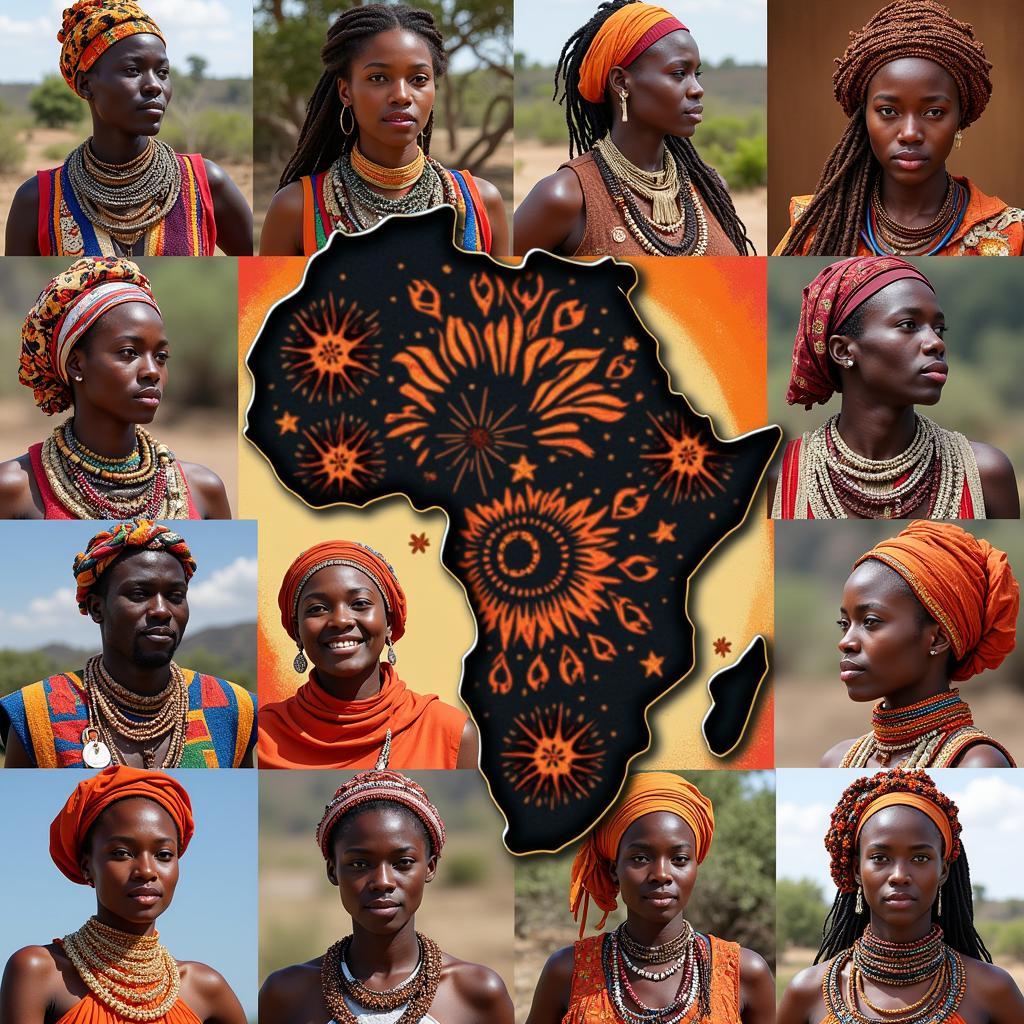Unlocking the Secrets of the African Karite Nut
The African Karite Nut, a treasure trove of natural goodness, has been a cornerstone of African Life for centuries. From its rich history intertwined with ancient traditions to its modern-day applications in cosmetics and cuisine, this remarkable nut offers a wealth of benefits. Let’s delve into the fascinating world of the African karite nut and uncover its secrets.
The Origin and Cultural Significance of the African Karite Nut
The African karite nut, often referred to as shea nut, originates from the shea tree (Vitellaria paradoxa), which predominantly grows in the savannas of West and East Africa. For generations, communities across the continent have revered the shea tree, not just for its practical uses, but also for its symbolic representation of resilience and sustenance. Traditional rituals and ceremonies often incorporate the karite nut, highlighting its deep-rooted cultural importance. In many cultures, the shea tree is considered sacred, a symbol of life and prosperity.
These communities have carefully guarded the knowledge of harvesting and processing karite nuts, passing down the techniques through generations. This traditional knowledge ensures sustainable harvesting practices and maintains the quality of the final product.
From Nut to Butter: The Traditional Process
The process of transforming karite nuts into the widely known shea butter is a labor of love, often carried out by women in cooperatives. It begins with collecting ripe fruits from the shea tree, followed by removing the outer pulp and drying the nuts under the sun. The dried nuts are then cracked, roasted, and ground into a rich, creamy paste. This paste is then kneaded and churned, separating the butter from the remaining residue. The final product, pure shea butter, is a creamy, ivory-colored substance with a distinct nutty aroma.
This traditional method, though time-consuming, yields high-quality shea butter, rich in beneficial nutrients and free from harmful chemicals.
The Remarkable Benefits of African Karite Nut Butter
The African karite nut offers a myriad of benefits, contributing to its widespread popularity in various industries.
Skin and Hair Care
Shea butter, derived from the karite nut, is renowned for its exceptional moisturizing and healing properties. Rich in vitamins A, E, and F, shea butter nourishes and protects the skin, promoting elasticity and reducing the appearance of wrinkles and scars. It is also highly effective in soothing dry, irritated skin, eczema, and other skin conditions.
What’s more, shea butter provides deep conditioning for hair, restoring shine and preventing breakage. Its moisturizing properties make it an excellent choice for treating dry, brittle hair and protecting it from environmental damage.
“Shea butter is not just a cosmetic ingredient,” says Dr. Anika Kofi, a renowned botanist specializing in African flora, “it is a testament to the power of nature’s healing touch. Its versatility and effectiveness in addressing various skin and hair concerns make it a true gift from the African savanna.”
Culinary Uses
In some African countries, shea butter is not only used for cosmetic purposes but also plays a significant role in traditional cuisine. It is often used as a cooking oil, adding a unique flavor to dishes. In certain regions, shea butter is a key ingredient in sauces, stews, and even desserts.
Economic Empowerment
The African karite nut trade plays a vital role in the economic empowerment of women in many African communities. By participating in cooperatives, women can generate income, gain financial independence, and contribute to the well-being of their families and communities. This economic empowerment has a ripple effect, improving access to education and healthcare, and fostering sustainable development.
Conclusion
The African karite nut is more than just a nut; it is a symbol of African heritage, resilience, and economic empowerment. From its traditional uses in rituals and cuisine to its modern-day applications in the cosmetic industry, the African karite nut continues to provide valuable benefits to communities worldwide. By supporting sustainable harvesting and fair trade practices, we can ensure the continued prosperity of the communities that depend on this remarkable resource.
FAQ
- What are the main benefits of using shea butter? Shea butter is renowned for its moisturizing and healing properties, benefiting both skin and hair.
- How is shea butter made traditionally? Shea butter is made by collecting, drying, roasting, grinding, and churning the karite nuts.
- Where does the karite nut come from? The karite nut comes from the shea tree, which grows in the savannas of West and East Africa.
- What is the cultural significance of the karite nut? The karite nut holds cultural significance in many African communities, often used in rituals and symbolizing resilience and prosperity.
- How does the karite nut contribute to economic empowerment? The karite nut trade empowers women in many African communities by providing income and promoting financial independence.
- Is shea butter edible? Yes, in some African countries, shea butter is used in cooking as a cooking oil and ingredient in various dishes.
- What is the scientific name of the shea tree? The scientific name of the shea tree is Vitellaria paradoxa.
Other questions people also ask:
- What are the different types of shea butter?
- How can I tell if shea butter is pure?
- What are the best ways to store shea butter?
Other articles you may be interested in:
- The History of Shea Butter in Africa
- The Benefits of Shea Butter for Different Skin Types
- Sustainable Harvesting Practices for Karite Nuts
If you need any assistance please feel free to contact us: Phone: +255768904061, Email: [email protected] or visit us at: Mbarali DC Mawindi, Kangaga, Tanzania. We have a 24/7 customer service team.

